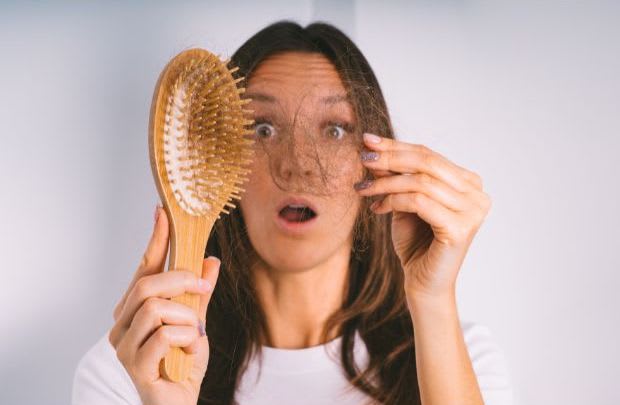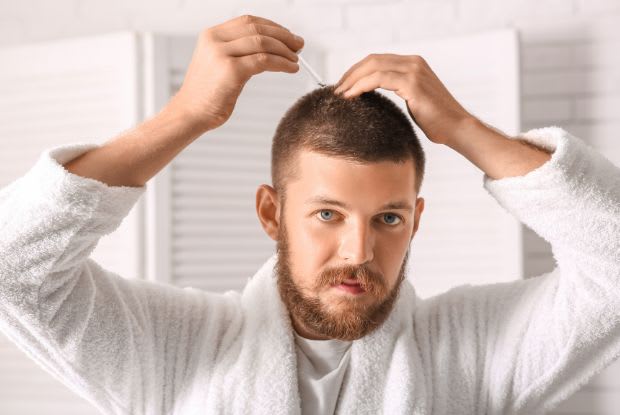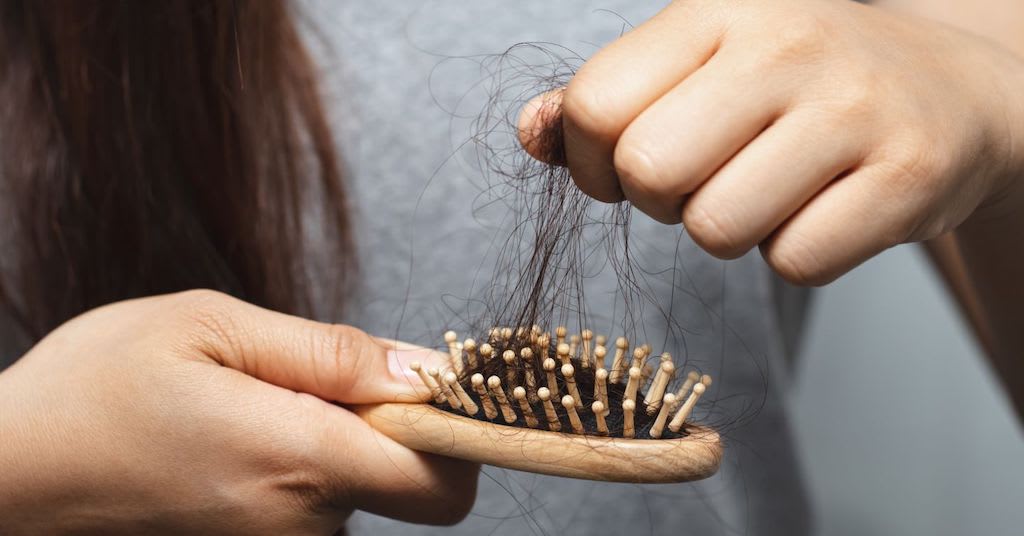Have you ever looked at your hairbrush or spotted a clump of hair in the shower and thought, "How much hair loss is normal?" Losing hair every day is natural, but how can you tell whether it’s regular shedding or something more serious?
Let’s break it down and answer your top questions about hair shedding vs hair loss so you’ll know what’s normal, when to worry, and what to do next.
The Hair Growth Cycle: How Hair Naturally Sheds
To understand how much hair loss is normal, it helps to know how hair grows and sheds. Every strand on your head is part of a continuous cycle made up of three stages:
- Anagen (growth phase): This is when your hair is actively growing, and it lasts anywhere from two to eight years. The longer the anagen phase, the longer your hair can grow. 1
- Catagen (transition phase): This is a short phase that lasts about two weeks. During this phase, the hair follicle shrinks, and growth slows as the strand gets ready to shed. 1
- Telogen (resting and shedding phase): Around 9% of your hair is in this stage at any moment. Hair in the telogen phase is released from the follicle, making room for new growth. 1 On average, this natural process leads to the loss of 50 to 100 hairs per day. 2
This cycle is normal, but certain factors can disrupt it, causing noticeable changes in the balance between hair shedding vs hair loss. 1
Factors That Influence Normal Hair Loss
How much hair you lose daily can vary depending on several factors. Let’s explore the most common ones:
- Age: As we get older, our hair tends to thin naturally. The growth phase shortens, and some follicles stop producing hair altogether, leading to less density.
- Hormonal changes: Hormonal shifts are a major influence on hair shedding vs hair loss. Events like pregnancy, menopause, or conditions like polycystic ovary syndrome (PCOS) can affect the hair growth cycle.
- Stress: Ever feel like you’re losing more hair during a tough time? High levels of stress can push more hairs into the shedding phase, a condition called telogen effluvium. This type of hair shedding is usually temporary and resolves once stress levels decrease.
- Diet and nutrition: Your diet plays a huge role in hair health. Deficiencies in key nutrients can weaken hair strands, causing them to fall out more easily. 1
Hair Shedding vs Hair Loss: What’s the Difference?

One of the most common questions people have is, “What’s the difference between hair shedding vs hair loss?” It’s important to know how to distinguish between the two.
Hair shedding:
- Part of the natural hair growth cycle
- Normal shedding ranges from 50 to 100 hairs per day
- Typically linked to temporary factors like stress, illness, or hormonal changes
- Resolves on its own within a few months 1
Hair loss:
- Indicates a disruption in the hair growth cycle
- May involve thinning hair, bald spots, or receding hairlines
- Can be caused by genetic conditions (like male or female pattern baldness), autoimmune disorders (like alopecia areata), or chronic stress
- Often requires medical treatment or lifestyle changes to address 2
If you’re seeing more hair in the shower drain or on your pillow than usual, keep track of your symptoms. Persistent thinning or bald patches often point to hair loss rather than typical shedding. 2
How Much Hair Loss Is Normal?
Losing 50 to 100 hairs a day is normal for most people. However, this number can vary based on personal factors like hair type and lifestyle. 2
For example:
- If you have long hair, shedding may appear more noticeable compared to someone with short hair.
- Washing or styling hair less frequently can make it seem like more hair is falling out on wash days, but it’s just accumulated shedding.
The key is consistency. If your daily shedding suddenly increases or you notice dramatic changes in your hair’s density, it could be a sign of hair loss rather than regular shedding.
When to Seek Professional Help
So, when does shedding cross the line into something worth investigating? If you notice any of the following, it’s time for an online consultation:
- Excessive shedding: Seeing more hair than usual in your brush, drain, or on your pillow.
- Thinning areas or bald spots: These may indicate conditions like androgenetic alopecia or alopecia areata.
- Prolonged shedding: If you’ve been shedding heavily for a few months, this could point to an underlying issue.
- Accompanying scalp issues: Redness, itching, or flaking alongside hair loss may indicate scalp conditions like psoriasis or fungal infections. 2
A professional can perform tests to determine whether your symptoms are due to natural hair shedding, hair loss, or a medical condition.
Treatments for Hair Loss

The good news? There are plenty of treatments available, whether you’re dealing with hair shedding vs hair loss. Let’s look at some of the most common options:
- Minoxidil: Promotes hair growth by altering the stages of the hair growth cycle. 3
- Finasteride: A prescription medication that is commonly prescribed for male pattern baldness. It works by blocking DHT, a hormone linked to hair loss. 4
- Lifestyle changes: Foods rich in minerals such as iron, zinc, and selenium are important for healthy hair. Additionally, stress management practices like yoga, meditation, and regular exercise can reduce stress-induced shedding. 1
- Hair transplants: For severe cases, surgical procedures can restore lost hair in thinning or balding areas.
- Natural remedies: Some people turn to natural solutions like scalp massages, essential oils (like rosemary or peppermint), or herbal supplements. 1 While these options may not work for everyone, they can complement other treatments.
Conclusion
Shedding a little hair every day is completely normal, but knowing the difference between hair shedding vs hair loss can help you stay ahead of potential problems. If you’re ever unsure about how much hair loss is normal for you, seeking professional advice is a smart first step.
The content in this article is intended for informational purposes only. This website does not provide medical advice. In all circumstances, you should always seek the advice of your physician and/or other qualified health professionals(s) for drug, medical conditions, or treatment advice. The content provided on this website is not a substitute for professional medical advice, diagnosis, or treatment.






